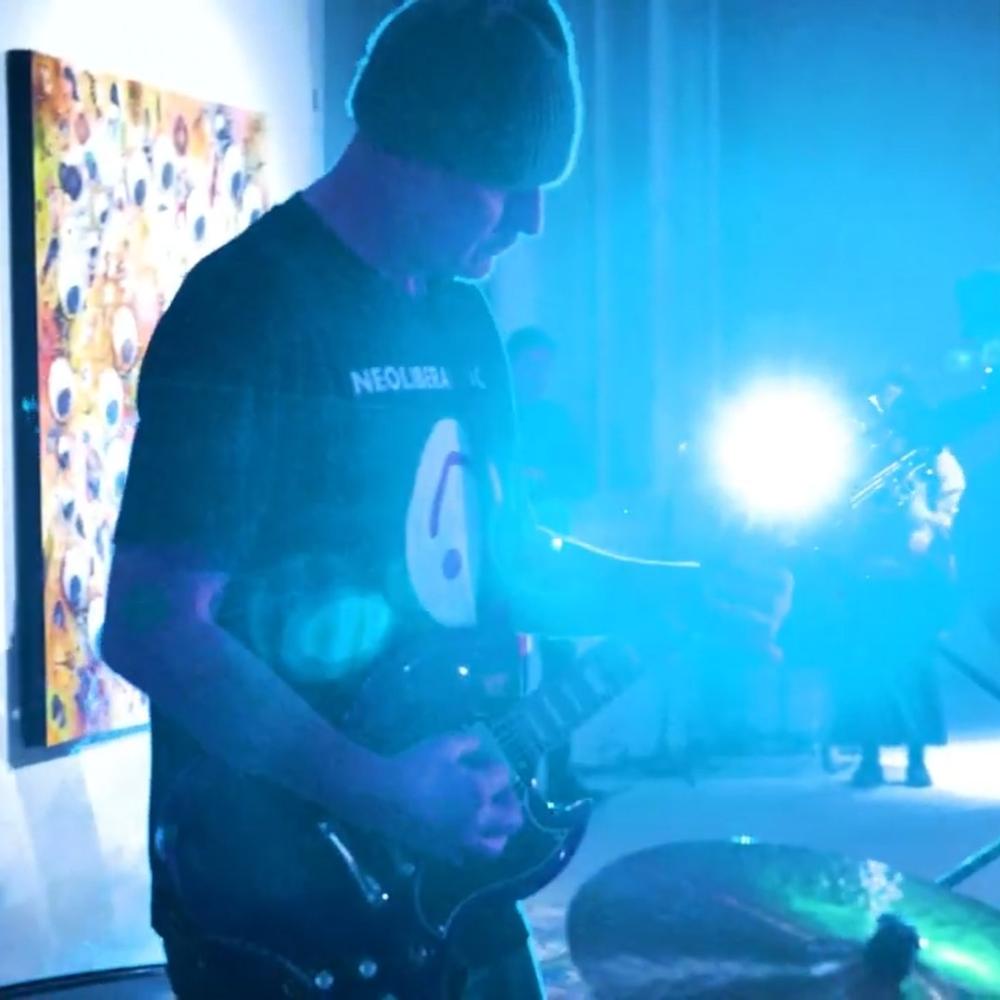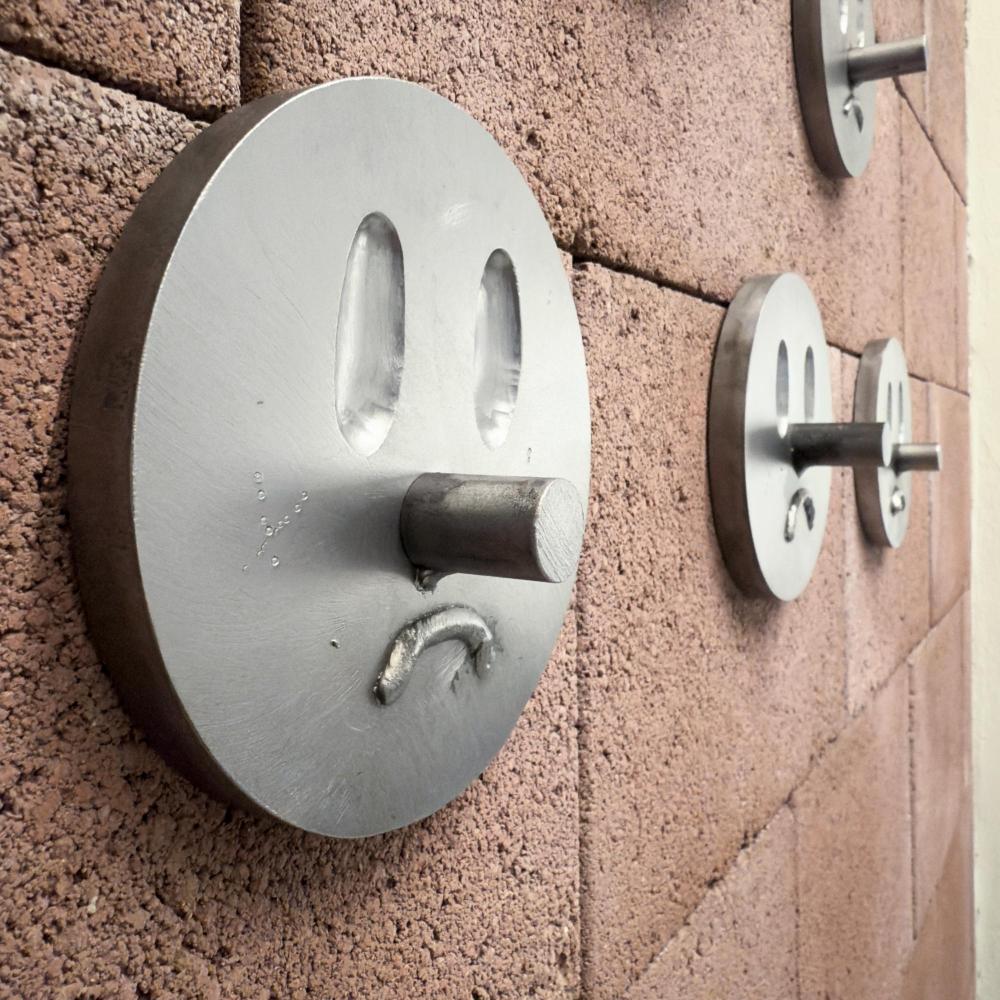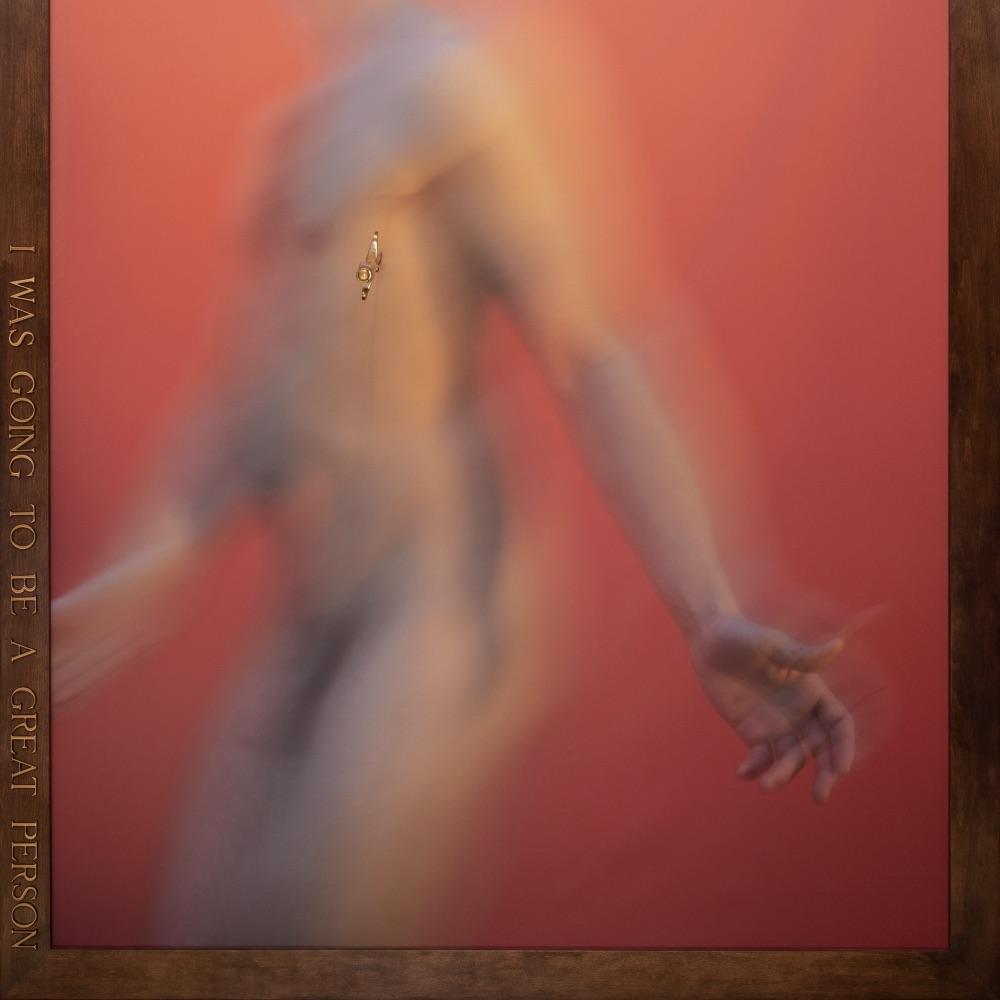Monika Žáková participated in the Telegraph Gallery residency in July and August 2021, which included Open Studio. On that occasion, we interviewed her about her approach to making art, her residency and her professional life.
How would you define yourself as an artist?
My work is mostly painting, but I also draw and create spatial objects in metal. I also work with plaster and textiles.
What was your first contact with art and when did you have the idea to pursue this field professionally?
I actually had a clear idea quite early on because I spent a lot of time drawing as a child and then I got into ceramics and thought I was going to be a sculptor. That didn't happen in the end and I started to paint and eventually I studied at the Academy of Fine Arts with Jiří Sopek and Igor Korpaczewski.
What is your experience of studying at the Academy of Fine Arts?
Jiří Sopko gave us a huge amount of space, so from the beginning I was used to having to find my own themes. That was hard for me as a student, but in retrospect I am incredibly grateful to him for that. During my studies I also did an internship at the Dresden Academy in Ralf Kerbach's studio, which was a very enriching environment. It was a major moment of initiation for me and my work.
Would you assess the difference between the approach of artists in the Czech Republic and Germany?
It's been a few years since I did my internship in Germany, but I have to say that there is not much difference in the attitude of the students of the German and Prague academies. The bigger difference comes after graduation. In Germany, artists have much more opportunities and are more progressive and adventurous. However, I feel that the differences are slowly beginning to blur. We are starting to touch the western traffic.
Was it hard to make it in the free art scene after school?
I had an amazing start after school and lots of opportunities. Very soon a German gallery took notice of me, also thanks to an internship in Dresden, so I had a regular operation through sales and exhibitions. So for five years I did purely freelance work, but I reached a point where I found that only studio work was exhausting. So I found a civilian job for a while, but it was time consuming. Now I have managed to find a balance. I work as a teacher at the Secondary School of Arts and Crafts in Žižkov Square, which I myself graduated from. It is a very creative environment and I also have a strong emotional attachment to it.
What is it like to suddenly become an educator? Does it give something to your artistic work?
I have to say that I'm not exactly a classical educator. I don't have a degree in pedagogy, but I feel it's a huge advantage. I try to motivate students in a completely different way. I've only been in high school for a year, which has been influenced by covid and distance learning, but I find it very interesting to observe the work and attitude of the students. I do a kind of private survey and see who is how motivated. I think it's very important to have an inner passion for the arts that doesn't die out. If students don't have that in them, then unfortunately even the best teacher won't help. Paradoxically, teaching has infused me with the ambition of an artist. Students respond enthusiastically to my artistic output and I try to influence and motivate them in this way. Which is ultimately a motivation for me as well. It is important for students to realize that although the path of an artist is complex and requires long-term effort, the work they put in will pay off over time.
What are the reactions of those around you in the arts community to your work as an educator?
I confess that when a collector finds out that I'm now a teacher, I have to spend a lot of time and effort to convince them that I'm still working on my work and that this is the kind of rewarding work that gives me meaning and also order as an artist. Collectors have this idea that an artist has to be in the studio 24/7. I used to have a similar view, but it's necessary to get back into the civilian world and not be confined to the studio all the time. Being part of a working environment and a collective is something that defines us all in a way and I wouldn't underestimate that.
Do you also use your contacts from the art world for your teaching activities?
I definitely plan to involve the art scene and colleagues more in my teaching because it's very rewarding for the students. But we'll see what next year allows us to do.
Are you interested in the city of Olomouc and what are your feelings about it and the Telegraph building?
I was incredibly impressed with the Telegraph from an architectural point of view. The clean bare exposed materials, the industrial space, the fascinating light in the studio, the sensitive reconstruction. It's very important for artists to surround themselves with a cultivating environment. I was also intrigued by the fusion of gallery, coworking space and café. I really like the programme of cinema and other events. In Olomouc, I mostly visited the city centre and the square with the patchwork pavement, which I have never seen anywhere else. Then of course the vegan restaurant Hrášek and I also enjoyed going down the haunted staircase from Villa Primavesi to Bezručovy sady. I also managed to visit Svatý Kopeček. Haná is conveniently located within the Czech Republic. From Haná you can get anywhere in a minimum of time, so I went to see exhibitions abroad as well.
Has being here influenced your work?
I will definitely evaluate it in retrospect and find out when I return to my normal environment. I've had the luxury of time and a great space to create and I feel like mine is starting to go where I want it to go.
Did the loneliness of the residency affect you?
I'm used to working alone. The studio visits are great, but after the energy exchange I need some time to settle down and continue working. Some people may like the hustle and bustle of shared studios, but I need concentration to create.
How did you arrive at your idiosyncratic expression that works with the illusion of materials and the impression of fragility?
My current work builds on the Dresden experience. At the Dresden Academy I painted paper fans and intertwined ribbons. I concentrated a lot on the material, but translated it into the classical medium of painting. Then I started to glue paper onto canvas. The surface of the papers has excellent qualities, but if you make a few actions and movements, you can turn a flat surface into a three-dimensional surface. I started to take advantage of this fact. My current work focuses on textile and collage-like paintings. For a long time I worked with paper, which is close to textiles in texture and origin. However, paper has one disadvantage, namely that when you create a line by bending it, it cannot be returned to its original form after this intervention. Textiles, however, can. I am now exploring the possibilities of working with textiles, which seem almost limitless at the moment.
You had the opportunity to visit the Signal II exhibition at the Telegraph How did you find the exhibition interesting and which works appealed to you the most?
It's a wonderful opportunity to see such an extensive and high quality collection by Robert Runták. The first work that caught my eye was a drawing by Jiří Kornatovský. It looks like a black hole, around which I moved uncertainly around the exhibition space. I had the feeling that I would be drawn in. I must admit that I was disturbed by one exhibit in the show. For a long time I thought it was really a forgotten chair. It was only after a long time that I discovered that it was the work of Jiří Kovanda, whose work I know and like. I would say that I am quite a skilled viewer, also thanks to my foreign experience, but I really enjoyed uncovering this object, which is probably what I liked most about it and I saw the meaning and intention of the artist. Then I was intrigued by the earlier work of Daniel Pitín, who, by the way, is a graduate of the same high school where I am currently teaching. Břetislav Malý also has an amazing thing in the exhibition, which I had the opportunity to discuss directly at the opening. When you know the artists personally and they are close to you, you approach their artistic artefacts in a completely different way. It's easier to find your way to them and connect.
Monika Žáková (1987) is a graduate of the Academy of Fine Arts in Prague. From the beginning of her work she has emphasized precision. Her work is characterized by concentration and a strong emphasis on the foreignness of the technical processing of images. She is fascinated by layering and meaning in dealing with the relationship between materials, especially in the form of canvas and paper.
By Mira Macík, Telegraph Gallery







